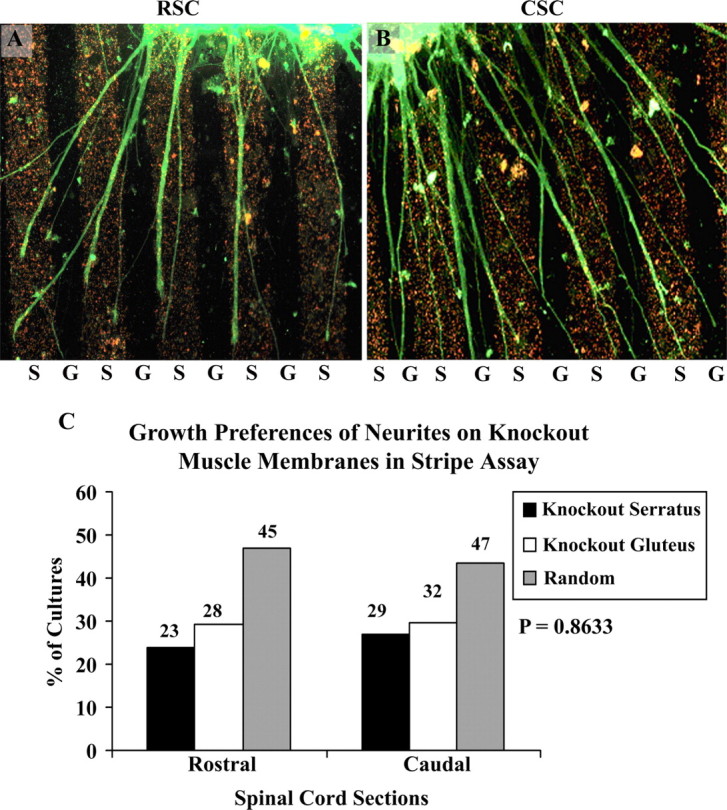Figure 3.

Position-dependent preferential outgrowth of E15 spinal neurites on membranes from P0 ephrin A2/A5 knock-out mice individual muscles. Spinal cord slices cut from the cervical [rostral spinal cord (RSC)] or lumbar [caudal spinal cord (CSC)] enlargement were placed on alternating stripes of membrane derived from the serratus anterior (S), a rostral muscle, or from the gluteus (G), a caudal muscle. Membranes applied to one set of lanes in each culture were mixed with fluorescent beads to mark lane boundaries. After 3 d, the cultures were fixed and neurites were labeled with antibodies to neurofilaments. A, An example of rostral spinal cord neurites growing preferentially on serratus anterior membranes; this occurred in 23.95% of cultures. B, An example of caudal neurites growing randomly; this occurred in 43.51% of cultures. C, Columns show percentage of cultures showing preferential outgrowth on rostral (serratus anterior) or caudal (gluteus) membranes or no striking preference (random). Overall (C), rostral spinal cord neurites grew preferentially to the same extent on SA (24%) and gluteus (29%) membranes. Similarly, caudal neurites grew preferentially to the same extent on either SA (27%) or gluteus membranes (29%). In both types of cultures there is an increase in the percentage of neurites showing no striking preference (random) compared with wild-type membranes (Fig. 2). This indicates no strong preference of neurite outgrowth on mutant muscle membranes from their corresponding axial position. Numbers indicate number of cultures in each category. A χ2 test for differences between rostral and caudal neurite outgrowth is not significant: p = 0.8633. Magnification: A, B, 120×.
